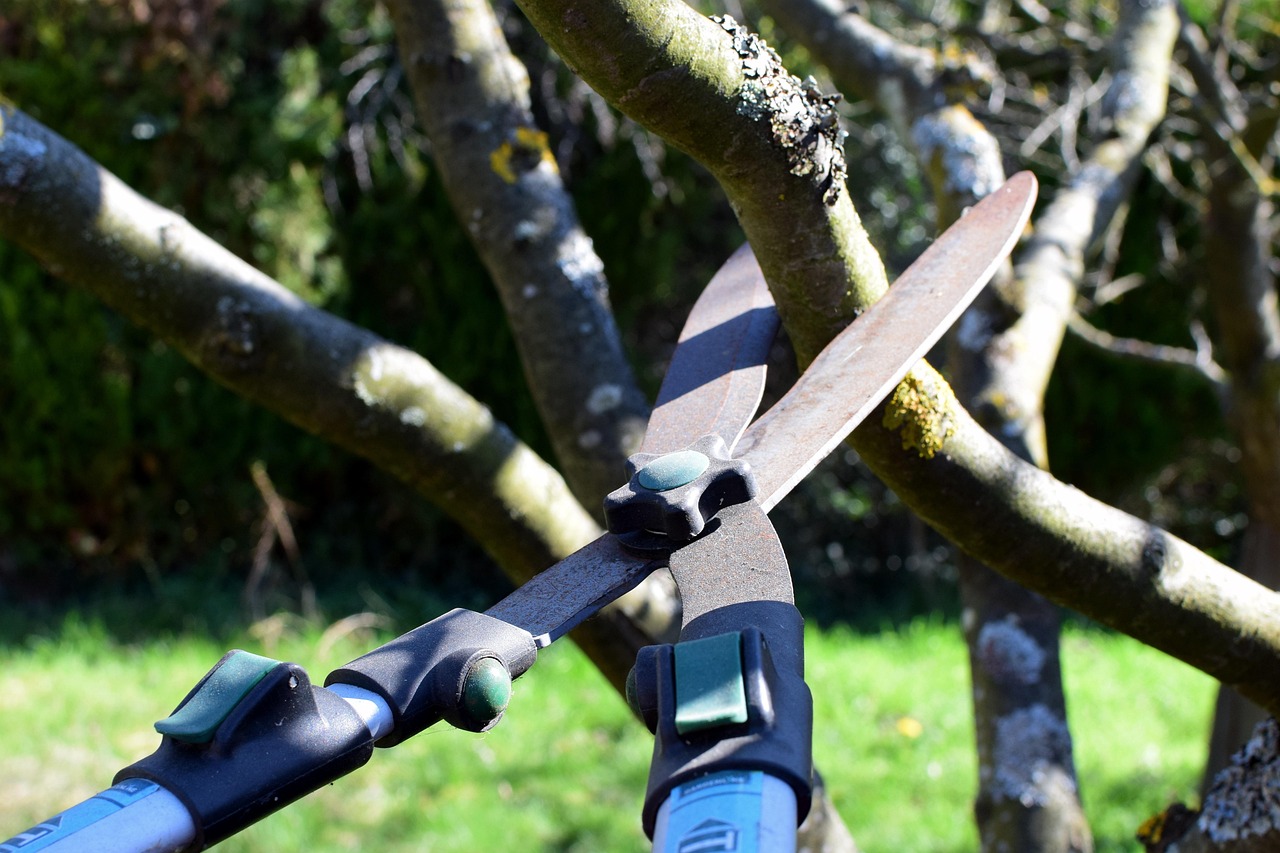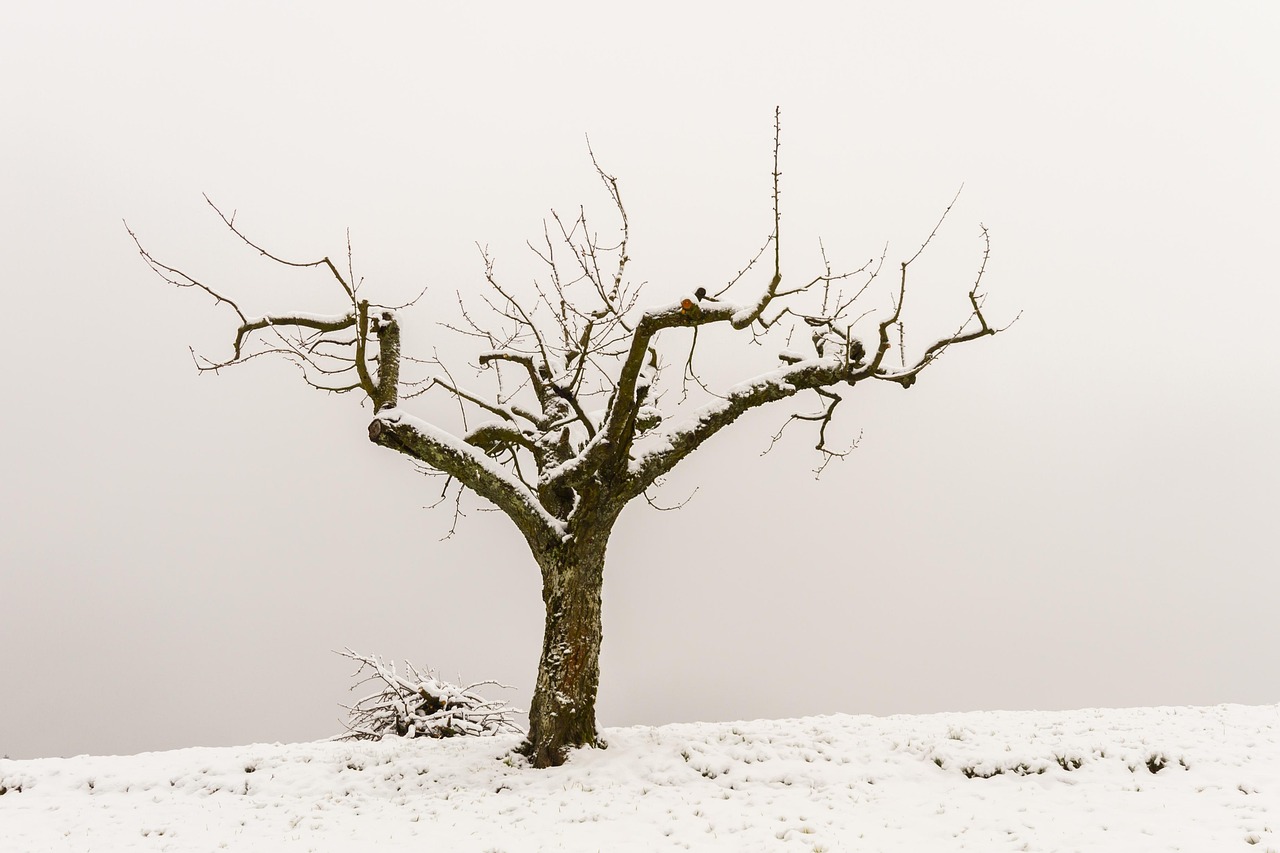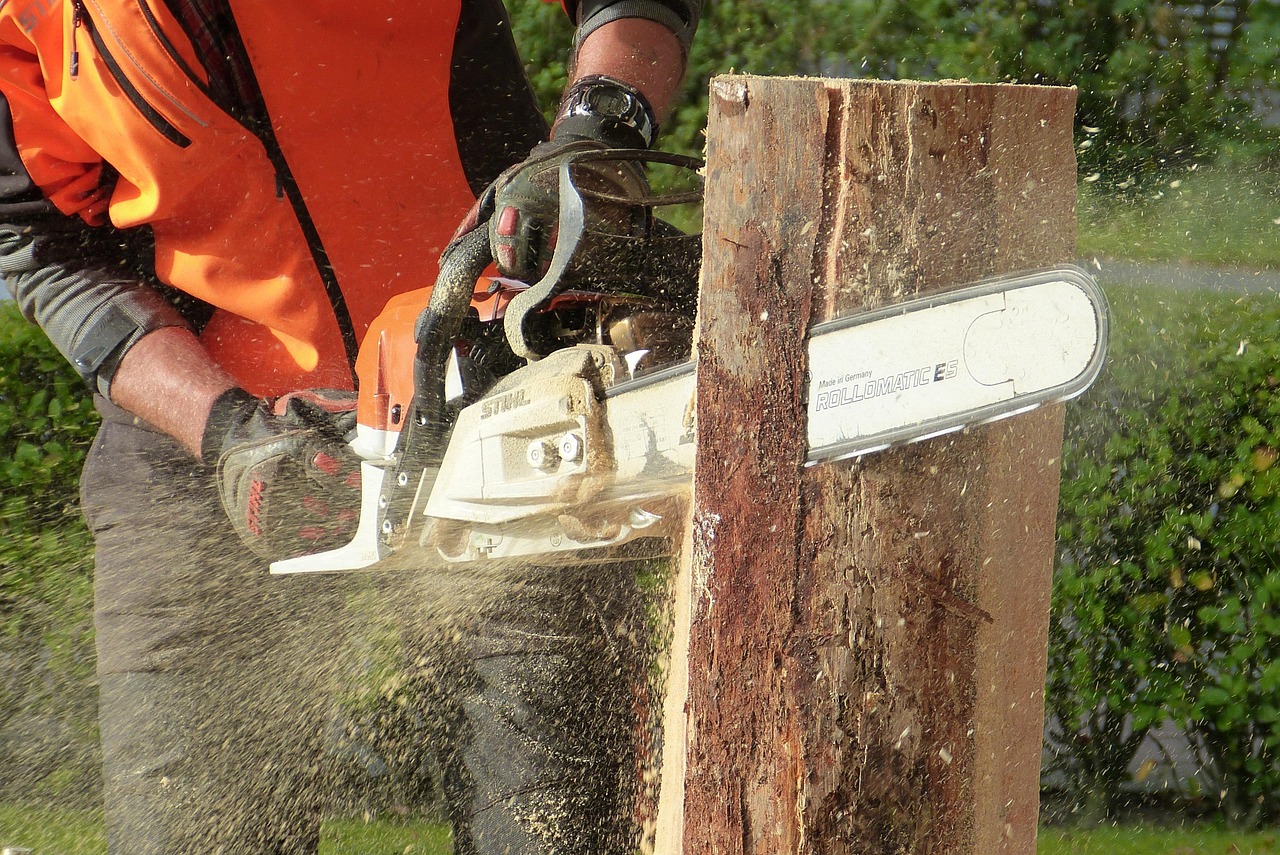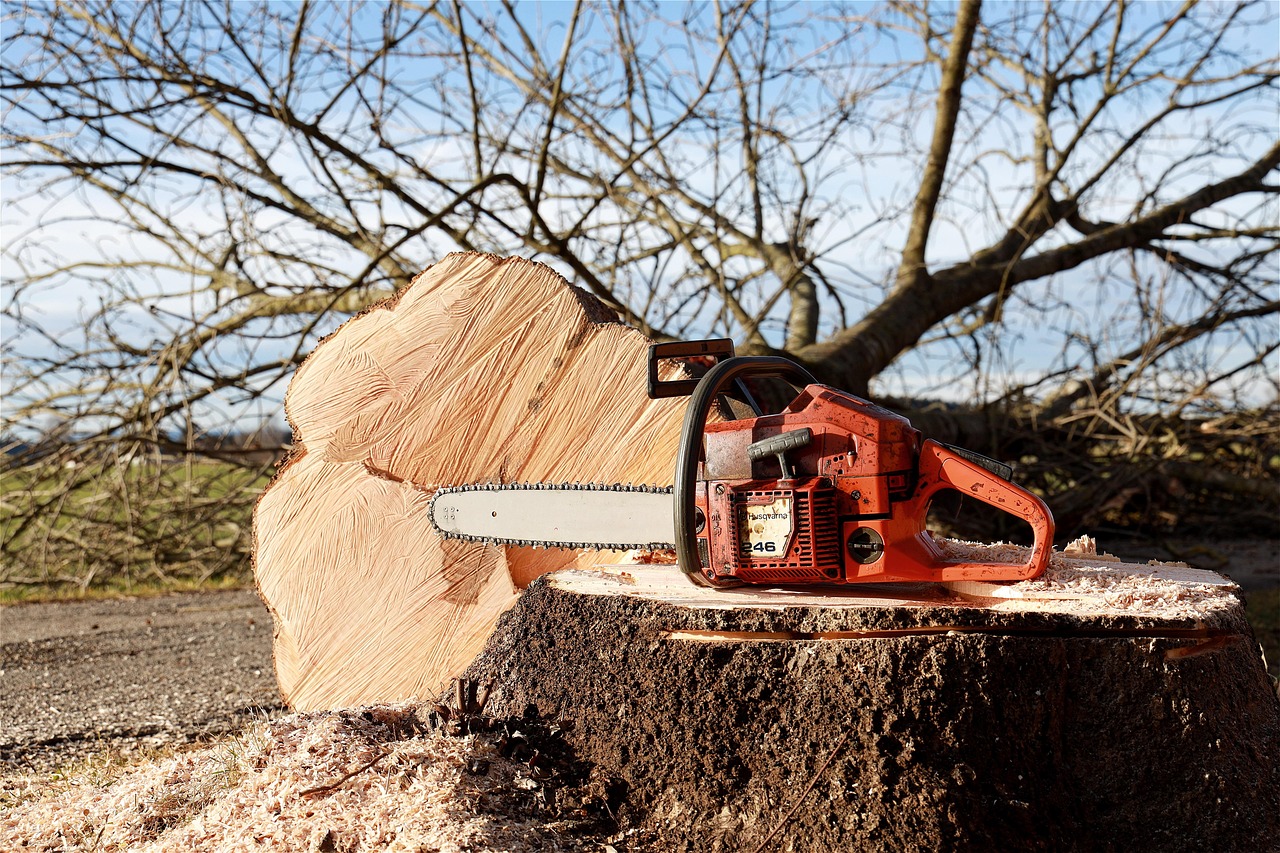Common hazards during professional tree pruning activities include falling branches, equipment accidents, electrical hazards, and exposure to harmful chemicals. Proper training and safety precautions are essential to minimize these risks and ensure the safety of workers and the public.
Tree pruning is a crucial task in maintaining the health and aesthetics of trees, especially in urban environments. While it enhances the beauty of landscapes, it is important to recognize that tree pruning comes with inherent dangers. Professional arborists and landscapers face various hazards that can lead to serious injuries or accidents if not properly managed.

Understanding the potential risks is the first step in ensuring safety during tree pruning activities. According to the Occupational Safety and Health Administration (OSHA), tree care professionals are at risk of injuries ranging from minor cuts to severe accidents that could be life-threatening. The following sections will explore some of the most common hazards associated with tree pruning.
Common Hazards in Tree Pruning
Tree pruning presents several hazards that can affect both the workers involved and bystanders. Awareness and preparation are key to minimizing these risks. Here are some of the most common hazards encountered during tree pruning:
- Falling Branches: One of the most significant risks during tree pruning is being struck by falling branches or limbs. These can cause serious injuries or fatalities if proper precautions are not taken.
- Equipment Accidents: The use of chainsaws and other power tools can lead to equipment-related accidents. Improper handling or malfunctioning tools can result in severe injuries.
- Electrical Hazards: Trees often grow near power lines. Contact with electrical wires can lead to electrocution or serious burns, making it critical to maintain a safe distance.
- Slips, Trips, and Falls: Pruning often requires working at heights or on uneven ground. This increases the risk of falls, which can lead to significant injuries.
- Exposure to Chemicals: Some trees may require chemical treatments before or after pruning. Exposure to these chemicals can pose health risks if proper safety measures are not in place.
The risks associated with these hazards can be mitigated through proper training and the use of safety equipment. Arborists should always wear personal protective equipment (PPE) such as helmets, gloves, goggles, and harnesses when working at heights.

Statistics on Tree Pruning Accidents
Understanding the prevalence of accidents in tree pruning can help reinforce the importance of safety measures. Below is a table summarizing key statistics related to tree care injuries:
| Type of Incident | Percentage of Total Injuries | Common Causes |
|---|---|---|
| Falling Objects | 38% | Lack of awareness, improper cutting techniques |
| Equipment Malfunction | 25% | Poor maintenance, misuse of tools |
| Electrical Contact | 20% | Working too close to power lines |
| Falls from Heights | 15% | Lack of fall protection, unstable footing |
The statistics highlight that falling objects account for a significant percentage of tree pruning injuries. Arborists must be vigilant and use proper cutting techniques to avoid creating hazards for themselves or others below. Regular training sessions can help keep workers informed about safe practices.
In addition to awareness of physical hazards, mental preparedness is equally important. Arborists should assess their work environment before beginning any task. This includes checking for nearby power lines, evaluating the stability of ladders or lifts, and ensuring that the tools are in good working condition.

It is also essential for tree care companies to have comprehensive safety protocols in place. This includes conducting regular safety drills and ensuring all employees are familiar with emergency procedures. By fostering a culture of safety, companies can significantly reduce the likelihood of accidents occurring during tree pruning activities.
In summary, while tree pruning is vital for maintaining healthy trees and landscapes, it comes with various hazards that must be addressed proactively. Workers should always be aware of their surroundings and be equipped with the necessary knowledge and tools to perform their tasks safely.
Safety Equipment for Tree Pruning
To minimize the risks associated with tree pruning, using appropriate safety equipment is essential. Arborists should be well-equipped with personal protective gear that can help prevent injuries from falling branches, equipment accidents, and other hazards. The following equipment is commonly recommended for tree pruning professionals:

- Hard Hats: These protect against head injuries from falling branches and debris.
- Safety Glasses or Goggles: Eye protection is vital to shield against flying particles while cutting.
- Hearing Protection: Earplugs or earmuffs can protect against noise from power tools like chainsaws.
- Gloves: Safety gloves provide grip and protect hands from cuts and abrasions.
- High-Visibility Clothing: Bright or reflective clothing helps ensure that workers are visible to others in the vicinity.
- Steel-Toed Boots: These boots protect feet from heavy falling objects and provide stability on uneven terrain.
- Climbing Harness: For those working at heights, a climbing harness can prevent falls when used with a safety line.
Using this protective equipment can significantly reduce the risk of injury during tree pruning activities. However, it is important to ensure that all gear fits properly and is in good condition before use.
Proper Techniques for Safe Tree Pruning
In addition to using safety equipment, proper pruning techniques play a critical role in reducing hazards. Arborists must be trained in the correct methods for trimming trees to minimize the risk of accidents. Here are some key techniques to follow:
- Assess the Tree: Before starting, evaluate the tree and identify which branches need pruning. Look for signs of disease or damage that may affect the cutting process.
- Plan Your Cuts: Determine the direction of branch fall and plan cuts accordingly. Always consider the surrounding area and ensure it is clear of people and obstacles.
- Use the Right Tools: Select appropriate tools for the job. For larger branches, use chainsaws or pole saws, while smaller branches can be cut with hand pruners.
- Make Clean Cuts: Ensure that cuts are clean and do not leave jagged edges. This helps promote healing and reduces the risk of disease.
- Work from the Ground Up: If possible, start pruning from lower branches and work your way up. This reduces the risk of falling from heights.
By adhering to these techniques, arborists can perform tree pruning more safely while reducing potential hazards. It is also recommended to participate in ongoing training programs to stay updated on best practices in the field.
Emergency Preparedness in Tree Pruning
No matter how cautious one may be, accidents can still happen. Therefore, having an emergency preparedness plan is crucial for tree care professionals. Arborists should be trained in emergency response procedures to act quickly if an incident occurs. Key components of an effective emergency preparedness plan include:
- First Aid Training: All team members should know basic first aid skills to address injuries promptly.
- Emergency Contacts: Maintain a list of emergency contacts, including local medical facilities and emergency services.
- Incident Reporting Procedures: Establish clear protocols for reporting accidents or near misses to ensure timely responses and improvements in safety measures.
- Regular Drills: Conduct regular emergency drills to practice response procedures. This keeps everyone familiar with their roles during an actual incident.
An effective emergency preparedness plan not only enhances safety but also fosters a culture of responsibility among workers. By preparing for the unexpected, arborists can reduce response times and better manage situations that arise during tree pruning activities.
Identifying Environmental Hazards
The work environment can introduce additional hazards that arborists must be aware of during tree pruning. It is important to conduct site assessments before beginning work. Common environmental hazards include:
- Uneven Terrain: Slopes, ditches, and holes can increase the risk of slips or falls.
- Weather Conditions: Rain, wind, or extreme heat can pose serious risks. Arborists should avoid working in inclement weather when possible.
- Nesting Wildlife: Birds and other animals may nest in trees, potentially leading to aggressive behavior if disturbed.
- Nearby Traffic: If working near roadways, the risk of accidents increases due to passing vehicles. Proper signage and barriers should be utilized to protect workers.
Being vigilant about environmental conditions helps arborists make informed decisions regarding when and how to proceed with tree pruning tasks. Regular training on hazard identification can further enhance worker awareness of potential dangers in their surroundings.
The combination of using appropriate safety equipment, employing safe pruning techniques, preparing for emergencies, and recognizing environmental hazards creates a comprehensive approach to ensuring safety during tree pruning activities. Each aspect contributes to minimizing risks and protecting both workers and the public during these important maintenance tasks.
Training and Certification for Arborists
Proper training and certification are vital components in ensuring the safety of tree pruning professionals. Arborists who undergo formal training not only learn about tree biology and health but also about the potential hazards associated with tree care. This knowledge equips them to handle various situations safely and effectively.
Many organizations offer training programs and certification for arborists. These programs often cover essential topics such as:
- Tree Identification: Understanding different species of trees and their specific needs helps arborists make better pruning decisions.
- Safe Pruning Techniques: Learning the best practices for cutting branches can significantly reduce the risk of injury.
- Equipment Handling: Proper use and maintenance of tools is critical for safety and efficiency.
- First Aid Training: Knowing how to respond to emergencies can save lives in critical situations.
- Environmental Awareness: Training includes understanding weather conditions, wildlife interactions, and site-specific hazards.
Certification programs often require arborists to pass exams, demonstrating their knowledge and skills. Additionally, many organizations encourage continuous education to keep professionals updated on new techniques, tools, and safety regulations.
The Role of Safety Protocols in Tree Pruning
Safety protocols are structured guidelines that help minimize risks during tree pruning activities. These protocols are developed based on industry standards and best practices. Implementing safety protocols can lead to a safer work environment. Here are some key components:
- Pre-Job Safety Meetings: Conducting safety meetings before starting work allows team members to discuss potential hazards and review safety procedures.
- Job Safety Analysis (JSA): Performing a JSA involves assessing the specific tasks to identify potential risks and implement control measures accordingly.
- Use of Personal Protective Equipment (PPE): Ensuring that all team members wear appropriate PPE is a fundamental aspect of safety protocols.
- Regular Equipment Inspections: Checking tools and equipment before each job helps prevent malfunctions and accidents.
- Emergency Response Plans: Having a plan in place for emergencies, including evacuation routes and first aid procedures, is crucial for worker safety.
By adhering to these protocols, arborists can create a safer working environment that reduces accidents and injuries. Regular reviews of safety protocols ensure that they remain effective and relevant to current practices.
Risks Associated with Equipment Use
The use of power tools during tree pruning presents its own set of hazards. Understanding the risks associated with various types of equipment is essential for safe operation. Common equipment used in tree pruning includes:
- Chainsaws: While highly effective for cutting large branches, chainsaws can cause severe injuries if not used correctly. Proper training on handling chainsaws is crucial.
- Pole Saws: These tools allow arborists to reach higher branches but can be unwieldy. Stability and control are key to preventing accidents.
- Ladders: Climbing ladders is often necessary for pruning tall trees. Ensuring that ladders are stable and placed on level ground is important to prevent falls.
- Chippers: Wood chippers can be dangerous if not operated according to safety standards. Operators should be trained in their use and aware of the dangers of entanglement.
Each piece of equipment has specific safety requirements and operational guidelines. Arborists should familiarize themselves with these details to avoid accidents while using these tools.
Health Risks in Tree Pruning
Apart from physical injuries, tree pruning can expose workers to various health risks. Understanding these risks is essential for long-term health and safety. Some common health concerns include:
- Respiratory Issues: Dust, pollen, and mold from trees can trigger allergies or asthma in susceptible individuals.
- Heat Stress: Working in high temperatures, particularly during summer months, can lead to heat-related illnesses if proper hydration and breaks are not observed.
- Tendonitis and Repetitive Strain Injuries: Repetitive motions involved in pruning can lead to chronic injuries affecting hands, wrists, and shoulders.
- Exposure to Chemicals: Some trees require chemical treatments that can pose health risks if not handled properly. Arborists must wear appropriate PPE when applying chemicals.
Addressing these health risks involves a combination of proper training, awareness, and preventive measures. Workers should be encouraged to take regular breaks, stay hydrated, and seek medical attention if they experience any health issues related to their work.
The Importance of Reporting Incidents
An effective safety culture encourages the reporting of accidents, near misses, or unsafe conditions without fear of repercussions. Incident reporting plays a crucial role in improving overall safety by identifying areas for improvement. Key aspects include:
- Documentation: All incidents should be documented accurately, including details about what occurred, how it happened, and any injuries sustained.
- Analysis: Analyzing reported incidents helps identify patterns or recurring issues that may need addressing through training or changes in protocols.
- Feedback Loop: Providing feedback to employees about changes made in response to reported incidents fosters a culture of continuous improvement.
A proactive approach to incident reporting not only enhances workplace safety but also empowers workers to take ownership of their well-being while performing tree pruning activities.
Enhancing Safety Culture in Tree Pruning
To further enhance the safety culture within tree pruning operations, companies can implement several strategies. These strategies not only improve safety but also promote a sense of community and responsibility among workers. Here are some effective approaches:
- Encourage Open Communication: Foster an environment where employees feel comfortable discussing safety concerns. Regular meetings can help facilitate this communication and allow team members to voice their thoughts on potential hazards.
- Safety Incentive Programs: Implement rewards for teams or individuals who consistently adhere to safety practices or report hazards. This can motivate workers to prioritize safety and contribute to a safer work environment.
- Regular Safety Audits: Conduct regular audits of safety protocols and practices. This helps identify areas where improvements can be made and reinforces the importance of safety in daily operations.
- Mentorship Programs: Pairing less experienced workers with seasoned professionals can provide valuable hands-on training. Mentors can share their knowledge and experiences, helping to instill safe practices in newer team members.
- Continuous Education: Provide ongoing training opportunities on new safety techniques, tools, and regulations. Keeping staff informed ensures they remain knowledgeable about best practices in tree pruning and tree care.
Investing in these strategies creates a proactive safety culture that emphasizes the well-being of workers. It encourages a collective responsibility towards maintaining high safety standards during tree pruning activities.
Technology’s Role in Improving Safety
Advancements in technology also play a significant role in enhancing safety during tree pruning. Various tools and applications can aid arborists in their efforts to minimize risks. Some key technological innovations include:
- Drones: Drones can be used to inspect trees from above, allowing arborists to assess the condition of branches without needing to climb or use ladders. This reduces the risk of falls and other accidents.
- Wearable Technology: Smart helmets equipped with communication devices can enhance team coordination during pruning activities. They may also include sensors that detect hazardous conditions.
- Mobile Apps: Numerous apps are available that provide information on tree species, pruning techniques, and safety guidelines. These mobile resources can serve as quick references for arborists in the field.
- Automated Equipment: Innovations in automated pruning equipment can alleviate some physical strain on workers and reduce the likelihood of injuries associated with manual cutting.
By integrating technology into their operations, tree care professionals can enhance safety measures while increasing efficiency. Embracing innovation not only protects workers but also improves overall productivity.
The Role of Regulations and Standards
Compliance with regulations and industry standards is critical for ensuring safety during tree pruning activities. Organizations such as OSHA set forth guidelines that help protect workers from hazards associated with tree care. Adhering to these regulations ensures that businesses are legally compliant and provides a framework for establishing safe work practices.
Key regulations that affect tree pruning include:
- General Duty Clause: This requires employers to provide a workplace free from recognized hazards that could cause death or serious harm.
- Personal Protective Equipment (PPE) Standards: OSHA mandates that employers must provide appropriate PPE to protect employees from hazards they may encounter during tree pruning.
- Hazard Communication Standard: Employers must inform employees about the chemicals they may be exposed to, including those used during tree treatments.
Staying informed about these regulations not only helps companies avoid fines but also promotes a culture of safety within the organization. Regular training on compliance can reinforce the importance of adhering to these standards among all staff members.
Final Thoughts
Tree pruning is an essential activity that contributes to the health and aesthetics of our landscapes. However, it carries inherent risks that must be managed effectively to protect workers and the public. By prioritizing safety through proper training, the use of protective equipment, adherence to protocols, and fostering a strong safety culture, arborists can significantly reduce the likelihood of accidents.
The integration of technology and compliance with regulations further enhances safety measures within the industry. Continuous education and open communication are crucial in creating an environment where workers feel empowered to prioritize safety.
Ultimately, recognizing and addressing the common hazards associated with professional tree pruning activities not only ensures the well-being of those involved but also promotes a sustainable approach to maintaining our natural environments. As awareness and practices evolve, we can look forward to safer tree care practices for all involved.
